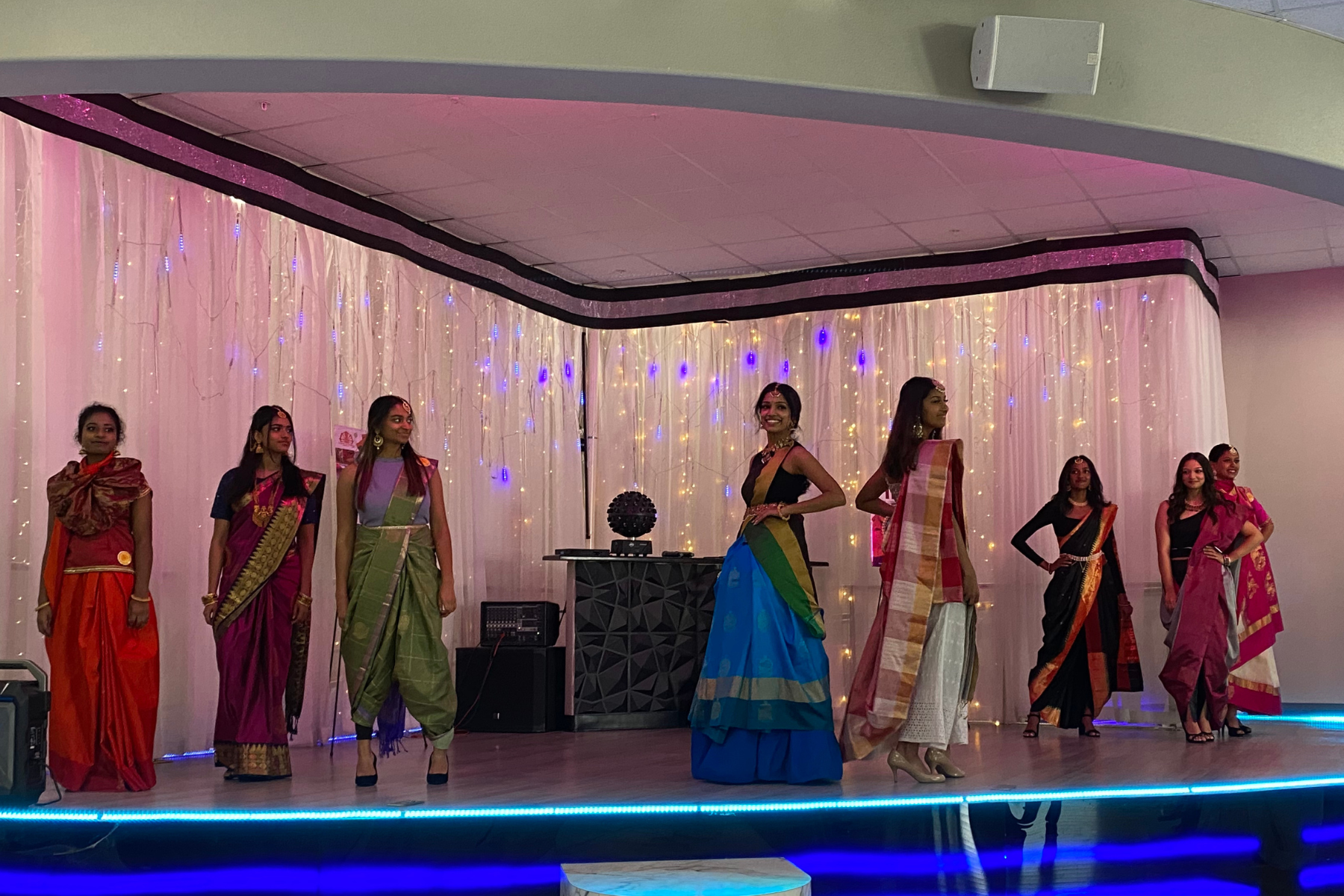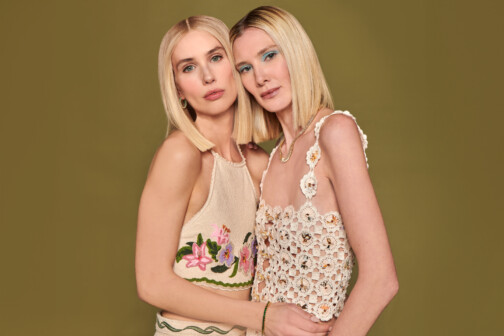One sunny October Sunday, women in brightly colored sarees and men in pants or veshtis, a South Indian men’s garment like a sarong, fluttered in and out of a nondescript Plano strip mall. There’s a Home Depot and a Burger King. An early childhood education center is near an orthopedic care clinic and a car wash. The scents of curry and biryani waft through the air from the nearby Hello! India café.
The traditionally-garbed visitors skipped all those stops and headed to the Elegance Ballroom, an event center-slash-ballroom dance studio, for Traditional India’s first-ever Handloom Expo.
Founded in 2017 by South Indian emigrants Pushpa Caldwell and Lakshmi Tamilmani, Traditional India is a North Texas organization that promotes and sells handwoven Indian sarees. The traditional women’s garment—a long strip of woven cloth draped around the body—has been worn for thousands of years on the Indian subcontinent. The practice of weaving sarees, often with silk or cotton thread, on handlooms has become an intricate art form over the millennia, Pushpa says. But considering the mass adoption of power looms to quickly weave the fabric and the younger generations tending to adopt Western styles of dress, that art form is quickly fading.
“We need to promote this art,” Pushpa says. “We need to sustain this art, because the next generation is not coming up to try this.” Which is why Traditional India decided to put on its first Handloom Expo.
Inside Elegance Ballroom, Pushpa, Lakshmi, and their team set up displays of vividly hued handwoven sarees behind gold stanchions and red velvet rope. There were soft blue, pink, and purple silks with floral or geometric patterns from Tamil Nadu, their home state in India, as well as high-end sarees from Northern India. In Traditional India’s Custom Collection display, every piece has “the language Tamil highlighted,” says Bharathi Caldwell, an event emcee and Pushpa’s* daughter. There were yellow silks with Tamil lettering and blue, red, and black sarees with embroidered figures of Tamil mythology.
One corner of the ballroom housed a stage backlit with white fairy lights. In another, there was a small room with seating, a kitchen counter, and Indian snacks and drinks, like rose milk. Along the back wall of the space, in front of the dance studio’s long mirror, tables were set up with fabric swatches and sarees for sale.
Bharathi says Traditional India has wanted to put on this expo for a while but couldn’t because of COVID. But “finally, everything just aligned for us.” The expo, which they’re also taking to Houston, was just a few weeks before Diwali, India’s famed Festival of Lights. This year, it falls on October 24. People typically buy new clothes for the holiday, Bharathi says, so expo visitors could go ahead and buy their new sarees or pre-order ahead of Diwali.
Along with sarees—like the organization’s “ready-made” designs that come with pleats and snaps sewn in to make dressing easier and faster—the event sold handwoven goods for the whole family. They had children’s clothes and a men’s collection of veshtis, which is “basically half the length of a saree,” says Divya Tamilmani, another event emcee and Lakshmi’s daughter. “You just wrap it around your waist, and you just tie it.” There were rugs, towels, blankets, and shawls.

More than 1,000 visitors filtered in and out of the expo in timed entries throughout the day. In the morning and afternoon, they held a fashion show to present Traditional India’s different sarees, patterns, and silk styles. Bharathi and Divya both walked in the show across the dance floor and up onto stage, along with seven other models. Their looks displayed various draping styles, “instead of just the traditional drape to draw the eyes of the younger population,” Bharathi says.
Drawing in the younger generations is one of the main goals for Traditional India, says Pushpa. By encouraging young women to wear sarees, they can support handloom weavers in India (Pushpa hopes expand their support to weavers in Africa and Europe as well) to maintain their livelihoods and keep the age-old art form alive. For Bharathi and Divya, it’s also about preserving their heritage as Indian Americans.
“It’s really easy for kids like us not to appreciate these types of things,” Bharathi says.
Says Divya, “If we don’t carry out our tradition, it’s just going to die within our generation and not carry on to the next.”
*A previous version of this story misspelled Pushpa Caldwell’s name in one reference. This has been corrected.
Author







